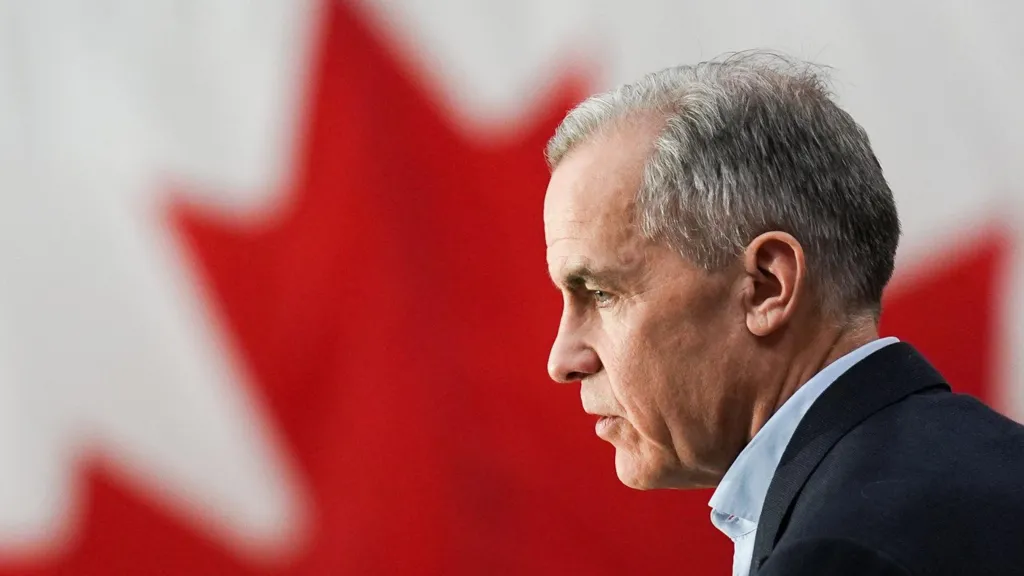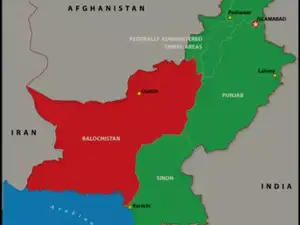
On the final day of Mark Carney’s intense and challenging campaign to become Prime Minister of Canada—a country vast in land and sparse in population—I was by his side.
It was his last attempt not only to secure victory but also to gain the clear majority he believed necessary to confront the erratic trade and geopolitical strategies of his “southern neighbour.”
For those who remembered Carney as a reserved technocrat and crisis-era central bank chief a decade ago, watching him evolve into a confident and passionate public speaker was remarkable.
I remember conducting numerous interviews during his time as a central banker, struggling to extract anything headline-worthy.
But the Carney on this campaign trail was different, though still drawing on his expertise in economic crisis management to shape his message.
Speaking to a crowd in Edmonton, Alberta—while wearing a jersey of the local Oilers hockey team—Carney declared, “President Trump has fractured the global economy… The U.S. no longer leads the global system. That era is over. We’re living through the fallout—but like in hockey, we’ll come out victorious.”
Supporters cheered with chants of “Elbows Up” and raised their arms, referencing the assertive posture of ice hockey—a symbol of resistance and readiness.
He emphasized Canadians’ solidarity: “Across the country, people are supporting one another—buying local, traveling within the nation, standing together.”
At his final campaign appearance in Victoria on Vancouver Island—limited to just 30 minutes—Carney addressed supporters informally.
“I’ve campaigned in prose,” he quipped to reporters, “So now, I’ll govern in econometrics,” referring with humor to the data-heavy branch of economics.
Under normal conditions, these statements might have intrigued only policy enthusiasts. But in today’s global climate, Carney’s rise, policy stance, and political mandate could carry wide-reaching significance.
Just as voting concluded on Monday, I sat down with him for an exclusive BBC interview. He exuded confidence but remained cautious.
Standing up to threats against sovereignty
Carney’s core message never wavered: he was the leader capable of resisting what he saw as President Trump’s betrayals and threats to Canada’s economic independence.
That message was visually reinforced at a major rally held near the US-Canada border, with the Ambassador Bridge and Detroit’s car industry skyline looming in the background.
The bridge, a critical conduit of bilateral trade between the two deeply interlinked economies, underscored his message about escalating tariffs and strained relations—a subtle but powerful visual from the Liberal Party leader about the continent’s changing dynamics.
The election results shocked many observers.
As 2025 began, the Liberal Party was polling at a dismal 16%, while the opposition Conservatives under Pierre Poilievre held a commanding 45% lead.
Poilievre appeared poised for a sweeping victory.
However, following Trump’s imposition of national security tariffs on Canada—citing an alleged link to fentanyl trafficking—and his inflammatory comment suggesting Canada join the United States, public opinion quickly shifted.
Once Carney took over as Liberal leader just two months before the election, the party began to rise in the polls, eventually overtaking the Conservatives and securing a win.
The election evolved into a presidential-style judgment: who could best handle Trump?
Poilievre was undermined by his previous overtures toward Trump and alignment with his political style.
Carney attracted progressive voters wary of Conservative rule under a Trump-influenced administration.
In a surprising turn, even Quebec separatists leaned toward the Liberals—not due to national unity issues, but because they feared U.S. influence more than Canadian federalism. A credible external threat, it seems, unified voters.
In our interview, Carney hinted at his strategy. He talked about forging a “win-win” relationship with the U.S., reminding Americans that Canada is the biggest trading partner for 40 of 50 U.S. states, and a vital supplier of energy and fertilizer.
He also mentioned Canada’s potential to provide critical minerals—a clear signal to Trump, who has shown intense interest in such resources elsewhere.
With an abundance of these minerals, Canada could become a more reliable supplier for Western countries than other global competitors. Yet Carney implied that Canada may prefer to build those supply chains with European allies instead of the U.S., depending on how negotiations unfold.
He’s expected to use external pressures to drive significant shifts in Canada’s economic model. Even granting the BBC an interview reflects his intent to broaden trade and security alliances. Defence cooperation is now part of the agenda.
Carney also hinted that the long-stalled Canada–UK trade deal could be revived and completed.
On Friday, he achieved a historic moment—announcing that King Charles would personally open the Canadian Parliament later this month. This hasn’t occurred since 1977. Though constitutional, it is a powerful symbol of independence from the White House’s growing dominance.
Now, all eyes turn to the upcoming G7 Summit, hosted by Carney in Alberta in mid-June. The gathering of the world’s largest economies comes just as a pause on aggressive “reciprocal tariffs” expires.
If Trump attends, the summit could be especially tense.
Currently, Canada and Mexico remain under pressure from fentanyl-linked tariffs. Once those expire, U.S. advisors have said both countries could face minimum 10% tariffs under a new global trade regime.
Meanwhile, frustration is building among U.S. allies. Japan’s finance minister recently hinted that the country’s vast holdings of U.S. debt might become a bargaining chip.
Europe has made little progress on trade talks, and the UK is now suggesting it may pivot more firmly toward the EU to revive its economic prospects.
Tariffs are already taking a toll on U.S. consumers and companies, raising costs and contributing to inflation. As trade slows, the impact is visible—empty shipping vessels from China and deserted ports along the U.S. West Coast are signals that may soon be reflected in the broader economy.
Carney, having dealt with multiple financial crises throughout his career, may be uniquely equipped to manage what lies ahead. Many financial markets have grown skeptical of the U.S. administration’s recent reassurances.
Yet Carney faces his own political obstacles. He fell short of securing an outright majority in parliament—but has chosen to frame this as an advantage.
He’s promoting a cross-party “Team Canada” strategy to engage the U.S. on equal footing.
However, the Premier of Alberta—a frequent visitor to Mar-a-Lago—immediately responded by pushing for legislation that would make separation referendums more accessible.
This sets the stage for a politically and economically complex period, not just for Canada, but for the entire international community. Carney may soon find himself influencing events far beyond his borders








